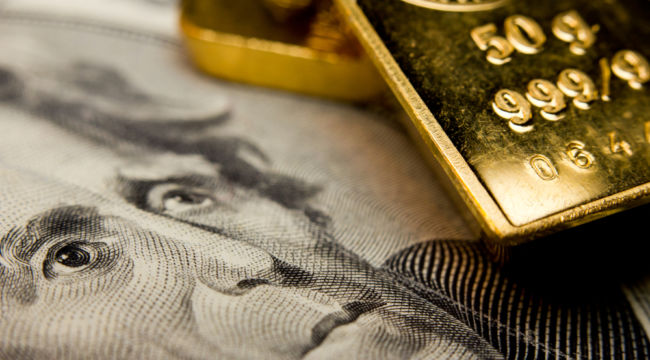The Lost Secret to U.S. Growth
No rate hike today.
As roundly expected, the Federal Reserve held steady.
Mr. Jerome Powell claimed his band of 12 would be “patient” with rate hikes.
But we are not so concerned with the day’s changing scenery, the shifting kaleidoscope.
Our concern is rather the grand sweep, the long view… the perspective of the circling eagle.
Today we attempt a wider glance.
What holds the eternal key to growth and prosperity?
Answer shortly.
But first a check on the here and now…
The stock market took Powell’s announcement in full stride.
The Dow Jones jumped 435 points today.
The S&P added 41 points, the Nasdaq, a raging 155.
But to return to our question: What is the source of long-term prosperity?
Productivity.
“Productivity growth over the last 350-plus years,” says Michael Lebowitz of Real Investment Advice, “is what allowed America to grow from a colonial outpost into the world’s largest and most prosperous economic power.”
Productivity growth averaged 4–6% for the 30 years post-WWII.
But average productivity has languished between 0–2% since 1980.
Meantime, labor productivity averaged 3.2% annual growth from World War II to the end of the 20th century.
And since 2011:
A mere 0.7%.
What might account for America’s declining productivity growth?
Might it relate to Nixon’s murder of the gold standard in 1971?
The gold standard, crippled though it was in its dying days, enforced an honesty.
A nation that consumed more than it produced would eventually deplete its gold stocks.
The fiat dollar removed all checks.
America no longer had to produce in exchange for goods… or worry about losing its gold.
And the Federal Reserve could spread its nets.
Lebowitz:
The stagnation of productivity growth started in the early 1970s. To be precise it was the result, in part, of the removal of the gold standard and the resulting freedom the Fed was granted to foster more debt… over the last 30 years the economy has relied more upon debt growth and less on productivity to generate economic activity.
“Unfortunately, productivity requires work, time and sacrifice,” he adds.
And the slow grind of productivity yielded to lure of the fast buck.
But the free lunch has no existence. Debt comes affixed to a price tag…
A debt-based economy steals from the future to satisfy today. It brings tomorrow’s consumption forward to today, that is to say… and leaves the future empty.
Daily Reckoning contributor Charles Hugh Smith:
Debt has one primary dynamic: Borrowing money to consume something in the present brings forward consumption and income…
If we choose to consume now, we have less income to save for future consumption or investments. If we sacrifice consumption today, we have more money in the future for consumption or investing…
Those who brought their consumption forward can no longer add to present consumption, as their future income is already spoken for.
And the present files greater and greater claims upon the future…
A dollar of debt just doesn’t carry the load it once did.
Fifty years ago, $1 of debt yielded perhaps $4 of economic growth.
And today?
Every borrowed dollar since 2008 may have yielded as little as 40 cents.
That is, last year’s borrowed buck wielded perhaps 1,000% less juice than 50 years ago.
“If debt were used for productive activities,” concludes Lebowitz, “economic growth would have risen faster than debt outstanding.”
Obviously… it has not.
In 1970 — the year before Nixon cut the dollar’s final tether to gold — public debt totaled $275 billion.
Or in today’s dollars, $1.2 trillion.
U.S. public debt today nears $22 trillion… and swells by the day:

Let us come forward…
The United States government has since borrowed some $11.6 trillion since the financial crisis.
But the American economy expanded only $5.1 trillion over the same space.
That is, GDP has increased 35%. But the national debt has risen 122%.
And the Congressional Budget Office estimates debt is expanding at a 6% annual rate.
Meantime, average real annual economic growth since 2009 runs to 2.23%.
Compare the past decade’s 2.23% to the larger 3.22% trend since 1980.
One percentage point may seem a relative trifle. And one year to the next it is.
But Jim Rickards says the United States would be $4 trillion richer had the 3.22% trend held this decade.
And run it 30, 50, 60 years, Jim concludes… and you come to a dismal conclusion:
A society that grows at 3.22% will be twice as rich as one that grows at 2.23% over the course of an average lifetime.
Here is Lebowitz with the sting in the tail:
“Given the finite ability to service debt outstanding… future economic growth, if we are to have it, will need to be based largely on gains in productivity.”
If we only knew from where…
Regards,
Brian Maher
Managing editor, The Daily Reckoning



Comments: